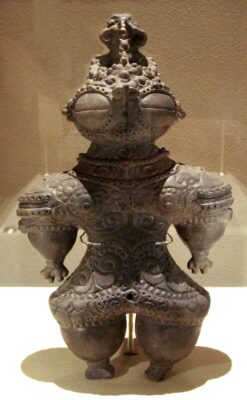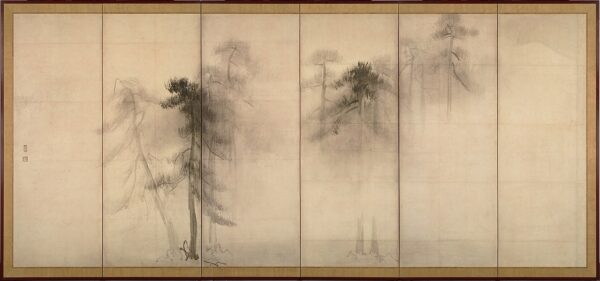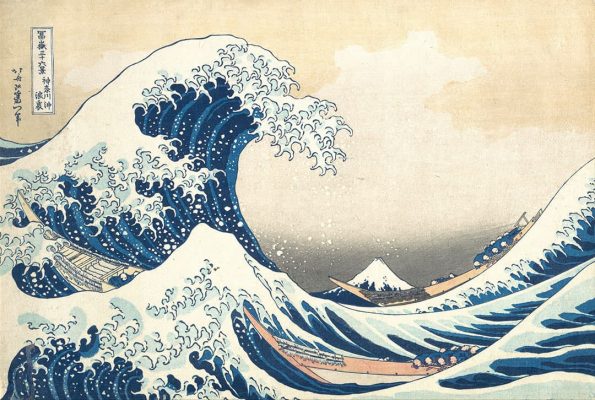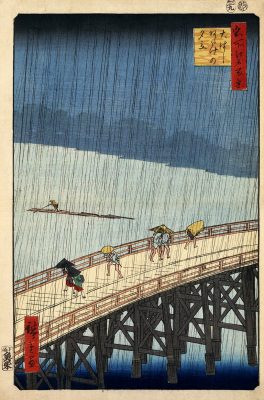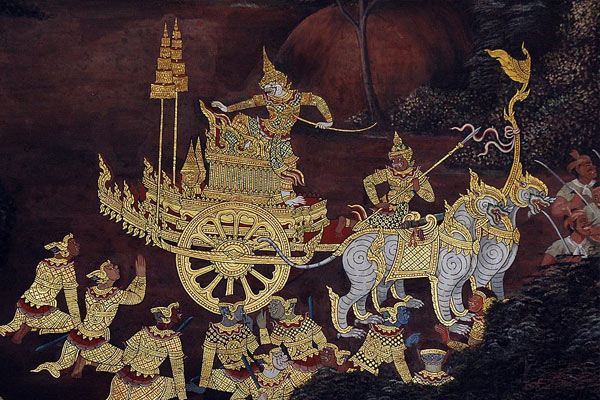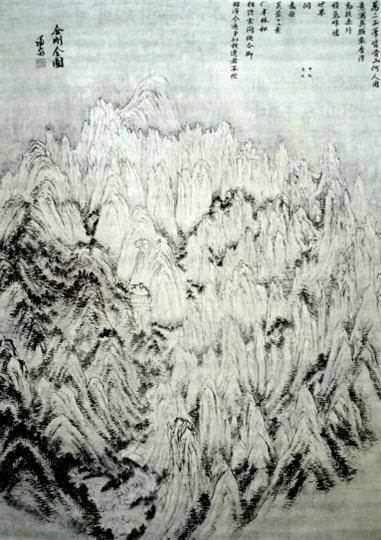Japanese Art
A harmonious relationship between man and nature
“The arts of Japan are among the richest and most expressive traditions in the world, and like all forms of art, they repay close attention and study. In some ways, however, they defy analysis because of their direct and evocative appeal. Words and explanations are not enough; art comes alive through experience.”
Stephen Addiss: “How to look at Japanese art”, 1935
Images: Dogu Miyagi, 1000 to 400 BCE; excavated from the Ebisuda Site in Osaki, Miyagi. Photo by World Imaging ·· Hasegawa Tōhaku: “Pine trees” (left screen), c. 1595 ·· Hokusai: “The great wave off Kanagawa”, ukiyo-e print, 1830-33 ·· Hiroshige: “Sudden shower over Shin-Ohasi Bridge and Atake”, ukiyo-e print, 1857
Like other Asian cultures, the art of Japan is notable for the variety of media and materials in which it was produced, including painting, calligraphy, ceramics, sculpture, and prints, among others. One of the main themes of Japanese art is “the close and harmonious relationship between man and nature” (Yuriko Saito: “The Japanese appreciation of Nature”, 1985). This is clearly reflected in the attention to the depiction of Japan’s natural landscape -with its high mountains and changing climate- in paintings and prints, but it also requires a closer look in order to capture the emotional value of other art forms, such as kadō or ikebana (flower arranging), or even Japanese poetry and traditional architecture.
A characteristic of Japanese art is its ability to assimilate ideas and styles from other cultures with which it came into contact, whether through trade relations or invasions. In the words of Stephen Addiss, mentioned above, “another characteristic of Japanese art is its ability to borrow and transform features from the arts of another countries“. Thus, in the usual (though not unanimous) periodisation of Japanese art, the transition from the “prehistoric” period (Jōmon, Yayoi, Kufun…) to the “ancient” period (Nara, Heian) is considered to have been brought about by contacts with Chinese culture. Later, in the medieval period, beginning with the Kamakura Period, the Zen sect was introduced in Japan, whose precepts influenced later Japanese art.
Trade was of great importance in Japanese society and influenced Japanese art as well. During the Edo Period (1603-1868) the huge increase in population led to increased trade between regions, and even with other countries, including Dutch merchants. The people of Edo “prided themselves on their modern sensibility — their openness to innovations, their bravado, their love of extravagant display” (Edo: Art in Japan 1615-1868. Produced by Donna Mann, National Gallery of Washington, 1998). This openness to the world was even more notable during the Meiji Era (1868-1912), when the influence between Japan and Europe became reciprocal, and it is easy to find the influence of Japanese ukiyo-e prints (Hokusai, Hiroshige…) on Impressionist and Post-Impressionist painters such as Monet and Van Gogh.
In the decades following the Second World War, contemporary Japanese art reflects the social and economic trauma of the defeat and the bombing of Hiroshima and Nagasaki. This is visible in traditional forms of artistic expression (painting, printmaking), as well as in film and manga, either overtly or implicitly (“Akira” by Katsuhiro Otomo). In recent decades, globalisation and multiculturalism have influenced the work of artists such as Yayoi Kusama or Takashi Murakami.
G. Fernandez · theartwolf.com
Follow us on:

